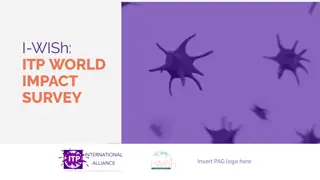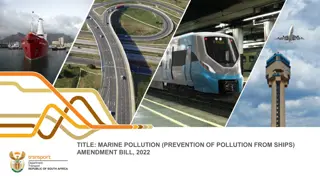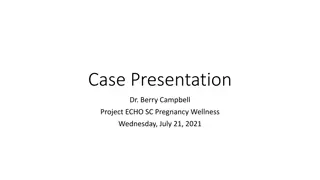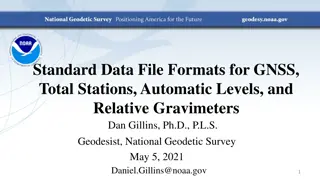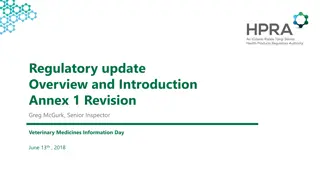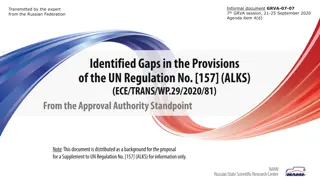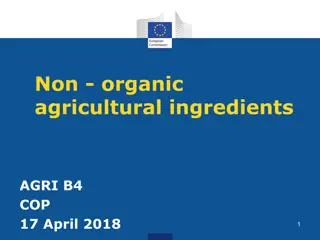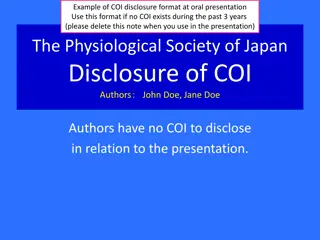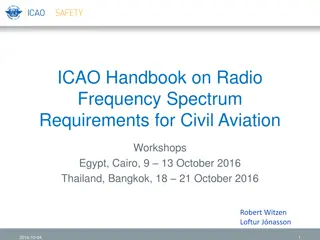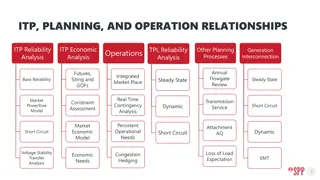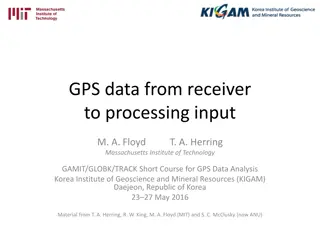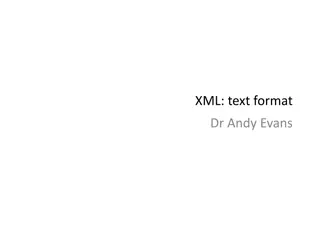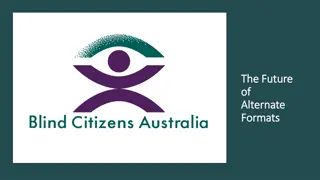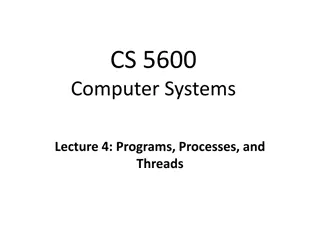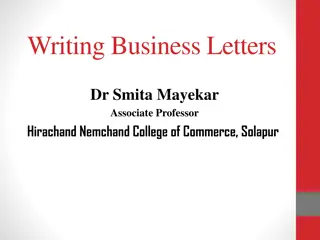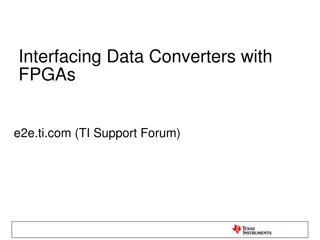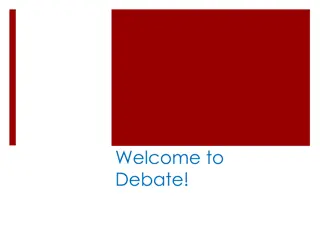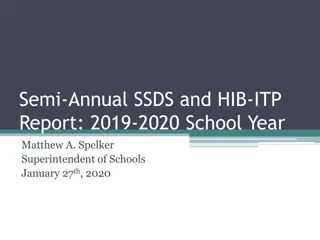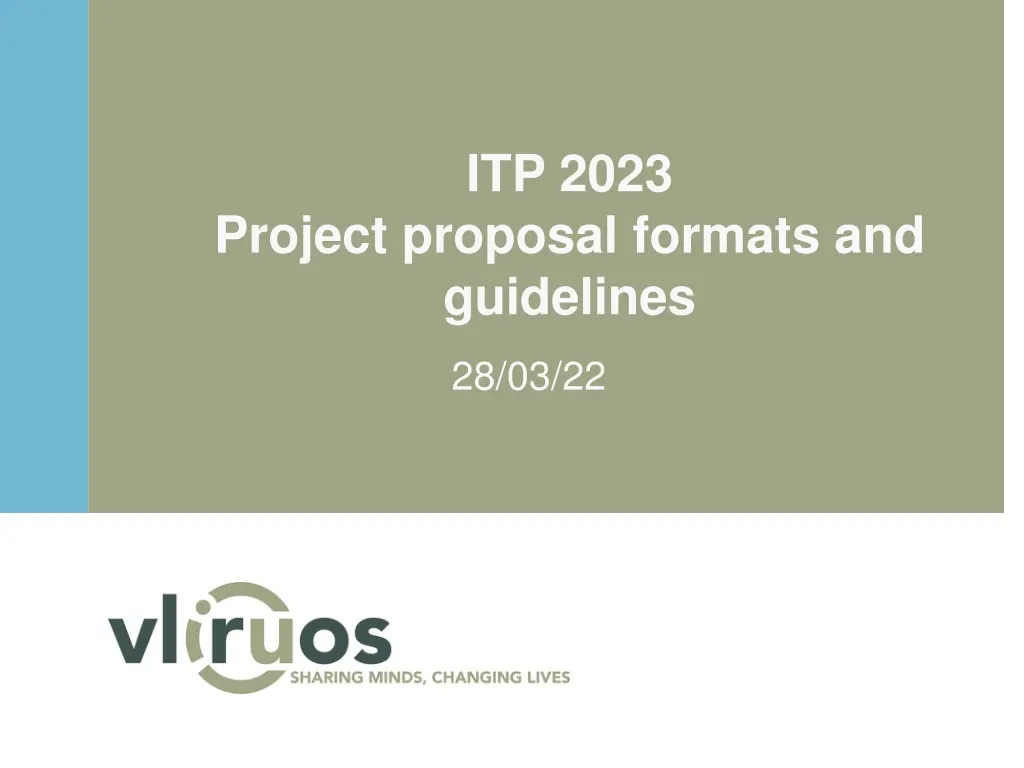
Innovative Formats and Guidelines for Project Proposals in ITP 2023
Explore the latest developments and guidelines for project proposals in ITP 2023, focusing on sustainable development, capacity building, and new SDG principles. Learn about the revised Theory of Change, ambitious goals, and the emphasis on collaboration and impact. Discover the updated formats and guidelines for project submissions, including standardization, simplification, and digitization for enhanced efficiency. Stay informed on the cutting-edge strategies shaping future projects in ITP 2023.
Download Presentation

Please find below an Image/Link to download the presentation.
The content on the website is provided AS IS for your information and personal use only. It may not be sold, licensed, or shared on other websites without obtaining consent from the author. If you encounter any issues during the download, it is possible that the publisher has removed the file from their server.
You are allowed to download the files provided on this website for personal or commercial use, subject to the condition that they are used lawfully. All files are the property of their respective owners.
The content on the website is provided AS IS for your information and personal use only. It may not be sold, licensed, or shared on other websites without obtaining consent from the author.
E N D
Presentation Transcript
ITP 2023 Project proposal formats and guidelines 28/03/22
Whats new? 2030 Agenda for Sustainable Development New Theory of change (VLIR-UOS and per outcome) Integration of transversal themes (environment, gender) and other priority themes Country strategy approach SDG centred approach SDG Principles: Leaving No One Behind (LNOB) Multistakeholder partnerships Interconnectedness
FYP2 ambitions 3 priorities Connect 4 change Cooperation among and beyond academic actors Valorisation Scientific and societal impact Collective learning Data, lessons learned, sharing tips & tricks, platform
ITP: Whats new? ITP s => projects: focus on capacity building of professionals through short-term training (+ pre- en post-training activities) Duration of 3 years max Several editions, min. 8 scholars for each edition Where & how: no fixed format Max global budget per ITP: 150.000 (training(s)+scholars)
VLIR-UOS Revised Theory of Change 1 goal 3 impact areas 6 strategic goals JSF HES4SD 6 VLIR-UOS outcomes along 2 axes: Individuals as agents of change HEIs as driver of change 6 project change domains
FYP2: 2022-2026 Connect4Change : New formats and guidelines Taking into account the new SDG framework (sustainable development context, Theory of Change per Outcome, SDG principles) Revised theory of change 2030 & SDG principles Formats and guidelines: standardisation, simplification, digitization via a new modular approach o Less text, documents, annexes o Online environment o Working documents (word/excel) o Avoiding duplication Scholarship & financial guidelines being updated aligned with Agenda for exchange/preparing
Target groups Define target groups Define recruitment strategy Define selection procedure
Points of attention Target groups: professionals A 40-60% balance between male and female No age limitations for participants Reasonable cross-section of trainees from different countries and regions Attention for vulnerable groups Leave no one behind principle, we want to give as many new applicants as possible a chance to receive a scholarship
Eligibility of countries 17 project partner countries: Africa: Benin, Burundi, DR Congo, Ethiopia, Kenya, Morocco, Rwanda, Tanzania, Uganda South Africa, Latin America: Bolivia, Cuba, Ecuador, Peru Asia: Indonesia, Philippines, Vietnam
Eligibility of scholars Scholarship candidates have to be a national and resident of one of the VLIR- UOS scholarship countries. OR an employee of a target organisation (HEI, NGO, SME, ) in one of the 17 VLIR-UOS partner countries (candidates exceptionally can have a different nationality, but this should be a minority) VLIR-UOS scholarship country list 2022-2027 (29): Africa: Benin, Burkina Faso, Burundi, Cameroun, DR Congo, Ethiopia, Guinea, Kenya, Madagascar, Morocco, Mozambique, Niger, Rwanda, Senegal, South Africa, Tanzania, Uganda, Zimbabwe Asia: Cambodia, Indonesia, Palestine, Philippines, Vietnam Latin America: Bolivia, Cuba, Ecuador, Haiti, Nicaragua, Peru
Support & guidance offered Formulation guidelines with background information on how to fill out the format & checklist for integrating SDG principles per module (based on SDGs as a compass toolkit) Online form connected to database / website for calls Formats (working doc): Excel template for Summary, Module 2, 3, 5, 7 Word template for narrative questions / outline for online inclusion of information Information package with slides summarizing essential info
Content: 8 modules + summary Format Pages of text 1: Context analysis 1 2: ToC and strategy 5,5 3: Organisation 0,5 4: Stakeholders and coherence 1,5 5: Planning & budgeting 0,5 (6: Risk management) - 7: Monitoring & reporting - 8: Learning and steering 0,5
Module 1 Context analysis 1. Sustainable development context 2. Individual and organisational capacity building context
Module 2 Developing a change narrative Narrative description of the change process / pathways and assumptions Here you can explain the content and the strategy of your ITP project. Develop a change narrative which serves as a compass for the project strategy. This narrative description of the change process should build further on the context analysis of Module 1 and should align itself on the VLIR-UOS ToC.
Module 2 Methodology and specific project strategies Key questions 1. Methodological approach: methodologies to realise changes, indicate what is creative and innovative (incl innovative pedagogic methods and approaches),target group definition, recruitment strategy, selection procedure, scholarship policy 2. Project priorities in terms of the transversal themes gender, environment, global citizenship in the project strategy
Module 3 Organisation 1. Who is involved? 2. How is the project structured/organised?
Module 4 Stakeholders 1. Identification, management & engagement strategy 2. Coherence: internal & external ESSENCE Describe and analyse the internal and external stakeholders that will be involved in or will benefit from the project. How will they be involved and their interest/influence.
Module 4 Coherence Key questions What synergies or complementarities are foreseen with 1) External: Projects/academic programmes/networks with external funding? The local/regional context? 2) Internal: with other VLIR-UOS funded projects / activities in line with the needs of (in)direct beneficiaries and local partners priorities? Max. 1 page
Module 7 Monitoring & reporting Standard indicators
Module 5 Planning and budgeting ESSENCE Word: Elaborate a narrative on your budget. Motivate the requested total amount. Elaborate on how much will be spent on the different activities and why you choose this repartition. Excel:
Financial framework Budget: max. budget is 150.000 EUR Implementation period: max. implementation period is 3 years. Project budget divided in budgets per activity year Activity year: 12-month period (1 Sept year X to 31 August year x+1 ) Date related expenses (e.g. mission related expenses, subscription costs, scholarship costs, etc.) need to be accounted for in the respective activity year Justification needed: these expenses must be accounted for individually with receipts, invoices, bank transactions and / or other supporting documents 26
Financial framework Overall project budget and detailed budget per activity year. Rules in terms of roll-over of budget between activity years are to be defined flexibility Budget lines: A. Investment costs B. Operational costs C. Personnel costs D. Scholarship costs E 1. Coordination costs Flemish HEI 27
Budget Format Budget lines A. Investment costs A.1. General: investment costs A.2. Vehicles A.3. ICT B. Operational costs B.1. General: goods & services B.2. Dissemination & uptake (events) B.3. ICT (operations and services) B.4. International mobility & subsistence B.5. Local mobility & subsistence C. Personnel costs ( indic. max. of XX%) C.1. Employment contracts C.2. Topping-up D. Scholarship costs D.1. Short term scholarship allowances in Belgium D.2. Study scholarship allowances in Belgium D.3. Research scholarship allowances in Belgium D.4. Short term scholarship allowances in partner country D.5. Study scholarship allowances in partner country D.6. Research scholarship allowances in partner country Total A-D E. Coordination Costs E.1. In Belgium (lump sum 10% of the A-D total) E.2. Local coordination costs (lump sum 5% of the A-D total) 29
D - SCHOLARSHIP COSTS The general principle for a project/embedded scholarship is that it contributes to capacity building at level of the involved department of the partner institution. Scholarship costs are costs linked to having scholars study / conduct research either in Belgium or in the country/region of origin A new scholarship system is being developed An intake of minimum 8 scholarships per edition/training within the ITP. Types of allowance Short term: Education, training or research stays up until 6 months for which no degree is awarded and that last between: Duration: between 7 days and 6 months. 7 days and 14 days: based on a daily allowance 15 days 31 days: based on a standard monthly allowance > 1 month - 6 months: based on a standard monthly allowance (pro rata) 30
D - SCHOLARSHIP COSTS- Guidelines Short term scholarship (allowance) - Indirect travel costs : 200 EUR (lump sum) - Airline ticket - Insurance : 1.400 EUR (upon justification) : 2 EUR / day (upon justification) The allowance is differentiated on the basis of the duration of the programme and stay with a maximum of 1500 EUR for 31 days/one month: - 7 days-14 days: daily allowance of 100 EUR - 15 days - 31 days: standard allowance of 1500 EUR (not pro rata!) - >31days 6 months: allowance based on monthly fee of 1500 EUR (pro rata). For stays longer than one month the allowance is calculated pro rata, by multiplying the total number of days by the allowance of 1500 EUR, and dividing this amount by 31 Extra costs possible (esp. for accommodation, indirect travel costs)
D - SCHOLARSHIP COSTS local Local Scholarships As a general principle local scholarships may be funded from the project budget but the amounts are to be in line with university and national guidelines Types of scholarships that can be identified: Short-term scholarships in the region 32
E - COORDINATION COSTS Coordination costs: The coordination costs are considered a lump sum amount in both budgeting and reporting, whereby the latter implies that, in principle, these expenses do not need to be accounted for by detailed supporting documents for individual expenses, since proof has been given by VLIR and accepted by DGD that the amount charged to DGD is in any case lower than real expenses at the level of the Flemish higher education institution. Budget Category E.2. Partner HEI is not available. 33
E - COORDINATION COSTS - Guidelines Calculation coordination costs The coordination costs are calculated as a percentage of the sum of categories A until D of the initially planned budget. The coordination costs can never exceed 10% of the initially planned budget The distribution of the coordination costs within subcategory E.1. Flemish HEI in case there are multiple partners is left to the parties involved 34
ITP 2023 Formats and guidelines Word & Excel Online Tool


